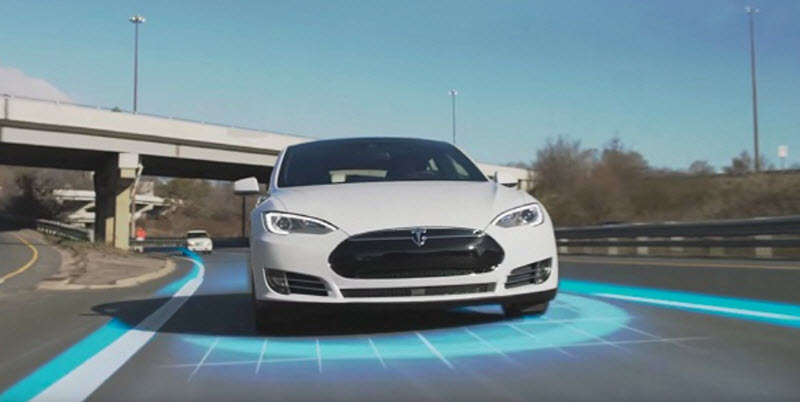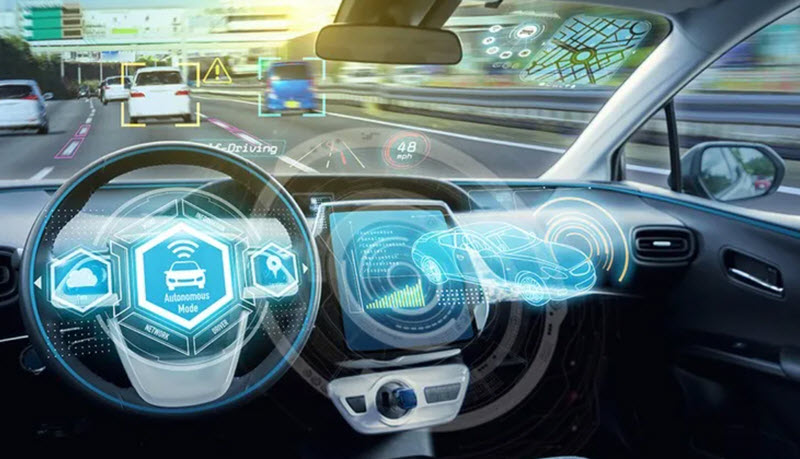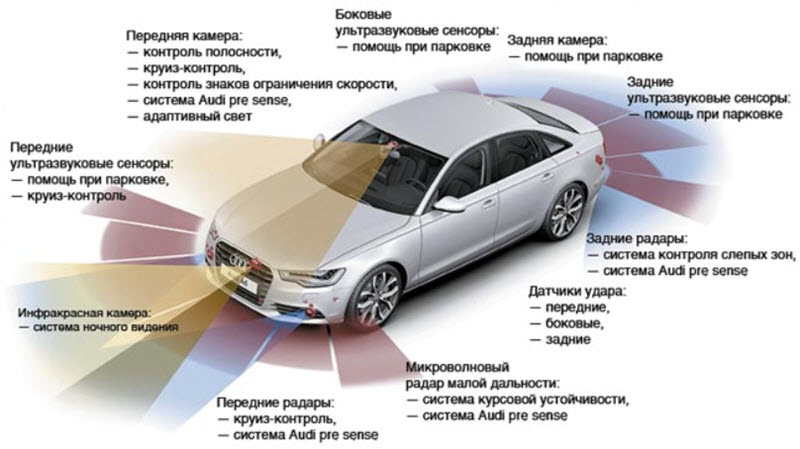
Autopilot in modern cars: types, principle of operation and implementation problems
Content
This phenomenon is called differently, autonomous control, unmanned vehicles, autopilot. The latter came from aviation, where it has been used for a long time and reliably, which means it is the most accurate.

A computer running a complex program, equipped with a vision system and receiving information from an external network, is quite capable of replacing a driver. But the question of reliability, oddly enough, in automotive technology is much tougher than in aviation. There are not as many places on the roads as in the air, and traffic rules are not as clearly enforced.
Why do you need an autopilot in your car?
Strictly speaking, you don't need an autopilot. Drivers are already doing a great job, especially with the assistance of already available quite serial electronic assistants.
Their role is to sharpen the reactions of a person and give him those skills that only a few athletes can get after many years of training. A good example is the operation of the anti-lock braking system and all kinds of stabilizers based on it.
But technological progress cannot be stopped. Automakers see the image of autonomous cars not so much as a future, but as a powerful advertising factor. Yes, and it is useful to have advanced technologies, they may be needed at any time.

Development is gradual. There are several levels of artificial driver intelligence:
- zero - automatic control is not provided, everything is assigned to the driver, except for the above functions that enhance his abilities;
- the first - one, the safest function of the driver is controlled, a classic example is adaptive cruise control;
- second - the system monitors the situation, which must be clearly formalized, for example, movement in a lane with ideal markings and well-regulated other signals, while the driver may not act on the steering wheel and brakes;
- the third - differs in that the driver may not control the situation, intercepting control only at the signal of the system;
- fourth - and this function will also be taken over by the autopilot, the restrictions on its operation will apply only to certain difficult driving conditions;
- fifth - fully automatic movement, no driver required.
Even now, there are actually production cars that have only come close to the middle of this conditional scale. In addition, as artificial intelligence expands, levels that have not yet been mastered will have to be stretched in terms of functionality.
Principle of operation
The basics of autonomous driving are quite simple - the car examines the traffic situation, assesses its condition, predicts the development of the situation and decides on the action with the controls or the awakening of the driver. However, the technical implementation is incredibly complex both in terms of hardware solution and software control algorithms.

Technical vision is implemented according to the well-known principles of viewing the situation in various ranges of electromagnetic waves and acoustic effects on active and passive sensors. For simplicity, they are called radars, cameras, and sonars.
The resulting complex picture is transmitted to a computer, which simulates the situation and creates images, assessing their danger. The main difficulty lies precisely here, the software does not cope well with recognition.
They are struggling with this task in various ways, in particular, by introducing elements of neural networks, obtaining information from the outside (from satellites and from neighboring cars, as well as traffic signals). But there is no sure XNUMX% recognition.
Existing systems regularly fail, and each of them can end very sadly. And there are already enough such cases. On account of autopilots, there are several very specific human casualties. A person simply did not have time to intervene in control, and sometimes the system did not even try to warn him or transfer control.
What brands produce self-driving cars
Experimental autonomous machines have been created a long time ago, as well as first-level elements in serial production. The second one has already been mastered and is actively used. But the first production car with a certified third level system was released quite recently.
Honda, known for its innovative solutions, succeeded in this, and then, mainly only because Japan ignores international safety conventions.

The Honda Legend Hybrid EX has the ability to drive through traffic, change lanes, and overtake fully automatically without requiring the driver to keep their hands on the wheel at all times.
It is this rapidly emerging habit, according to experts, that will not allow even third-level systems to be quickly legitimized. Drivers begin to blindly trust the autopilot and stop following the road. Automation errors, which are still inevitable, in this case will certainly lead to an accident with serious consequences.

Known for the advanced developments of Tesla, which consistently introduces an autopilot on its machines. Regularly receiving lawsuits from its customers who misunderstand the possibilities of autonomous driving and do not know how to use it correctly, therefore Tesla has not yet risen above the second level.
In total, about 20 companies in the world have mastered the second level. But only a few promise to rise a little higher in the near future. These are Tesla, General Motors, Audi, Volvo.
Others, like Honda, are limited to local markets, select features and prototypes. Some firms are working intensively in the direction of autonomous driving, while not being automotive giants. Among them are Google and Uber.
Frequently asked questions about unmanned vehicles
The emergence of consumer questions on autopilots is due to the fact that the majority of drivers do not understand well what research and development work is, and in this matter, also how they are related to legislation.

Who tests the machines
To test machines in real conditions, you must obtain a special permit, having previously proven that safety is ensured. Therefore, in addition to leading manufacturers, transport companies are also engaged in this.
Their financial capabilities allow them to invest in the emergence of future road robots. Many have already announced specific dates when such machines will go into actual operation.
Who is to blame in case of an accident
While the legislation provides for the responsibility of a person behind the wheel. The rules for using autopilots are designed so that manufacturing companies will get away from problems by sternly warning buyers about the need to constantly monitor the operation of robots.

In real accidents, it is quite clear that they formally occurred entirely through the fault of a person. He was warned that the car does not guarantee one hundred percent operation of recognition, prediction and accident prevention systems.
When can a car replace a person behind the wheel?
Despite the abundance of specific deadlines for the implementation of such projects, all that have already passed have been postponed to the future. The state of affairs is such that existing forecasts will also not be met, so in the foreseeable future fully autonomous cars will not appear, the task turned out to be too difficult for optimists who planned to solve it quickly and make money on it.
So far, breakthrough technologies can only lose money and reputation. And fascination with neurosystems can lead to worse results.
It has already been proven that too smart cars can start to recklessly on the roads no worse than young novice drivers with the same consequences.